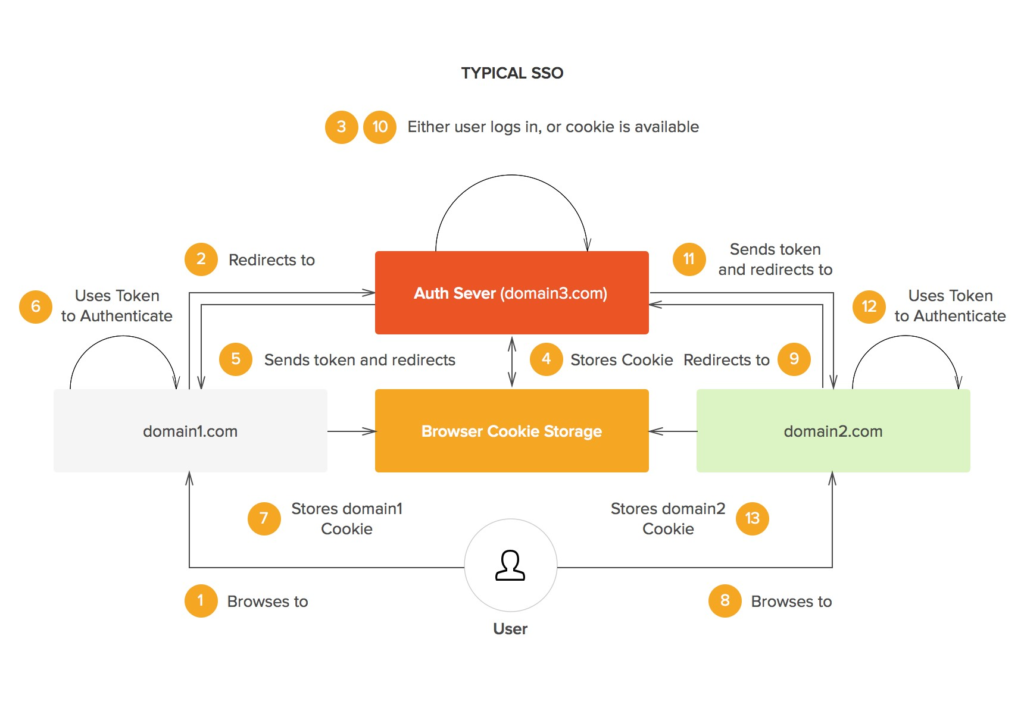Introduction:
In the ever-evolving landscape of digital identity and security, Single Sign-On (SSO) has emerged as a beacon of efficiency, simplifying user authentication across multiple applications. In a world where the average person juggles a multitude of online accounts, SSO offers a seamless solution to the age-old struggle of remembering numerous usernames and passwords.

Understanding Single Sign-On:
Single Sign-On is a user authentication process that enables individuals to access multiple applications with a single set of login credentials. Instead of managing separate usernames and passwords for each service, users can log in once and gain access to a variety of applications without the need for repeated authentication.
Key Components of SSO:
1. Identity Provider (IDP): At the heart of SSO is the Identity Provider, the guardian of user authentication. The IDP verifies the user’s identity based on their credentials and provides a secure token, signaling to other applications that the user has been authenticated.
2. Service Provider (SP): Service providers are the applications or services that users want to access. They rely on the IDP’s authentication to grant users access without requiring them to log in separately.
3. User Attributes: SSO can also transmit user attributes (such as name, email, or role) from the IDP to the Service Providers, allowing for a personalized and customized user experience.
Benefits of Single Sign-On:
1. Enhanced User Experience: SSO simplifies the login process, reducing the friction associated with remembering and entering multiple sets of credentials. This, in turn, enhances user experience and encourages users to engage more with the provided services.
2. Improved Security: SSO can contribute to improved security by reducing the need for users to create and manage multiple passwords. This minimizes the risk of weak or reused passwords and makes it easier for organizations to enforce strong authentication measures.
3. Time and Cost Efficiency: From an organizational standpoint, SSO reduces the administrative burden of password resets and support requests related to login issues. This results in cost savings and allows IT teams to focus on more critical tasks.
4. Centralized Access Control: SSO provides centralized control over user access, making it easier for organizations to manage permissions and revoke access when necessary. This is particularly crucial for enterprises with a large number of users and diverse applications.
Challenges and Considerations:
While SSO offers numerous advantages, it’s essential to be aware of potential challenges and considerations:
1. Security Concerns: While SSO can enhance security, it also introduces a single point of failure. If the IDP is compromised, it could potentially grant unauthorized access to multiple services.
2. Interoperability: Ensuring that SSO works seamlessly across various platforms and applications can be challenging. Compatibility issues may arise, requiring careful implementation and ongoing maintenance.
3. User Privacy: Transmitting user attributes between the IDP and SPs raises privacy concerns. Organizations must establish clear policies regarding the collection and sharing of user information.
Conclusion:
Single Sign-On stands as a testament to the ongoing quest for simplicity and security in the digital realm. By unifying access to multiple applications, SSO not only streamlines user experience but also contributes to enhanced security measures and operational efficiency. As organizations continue to navigate the complex landscape of digital identity, SSO remains a powerful tool for creating a seamless and secure user authentication experience.

